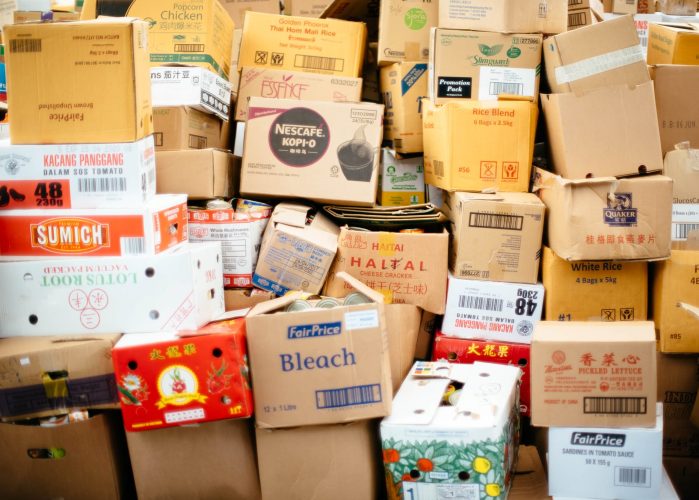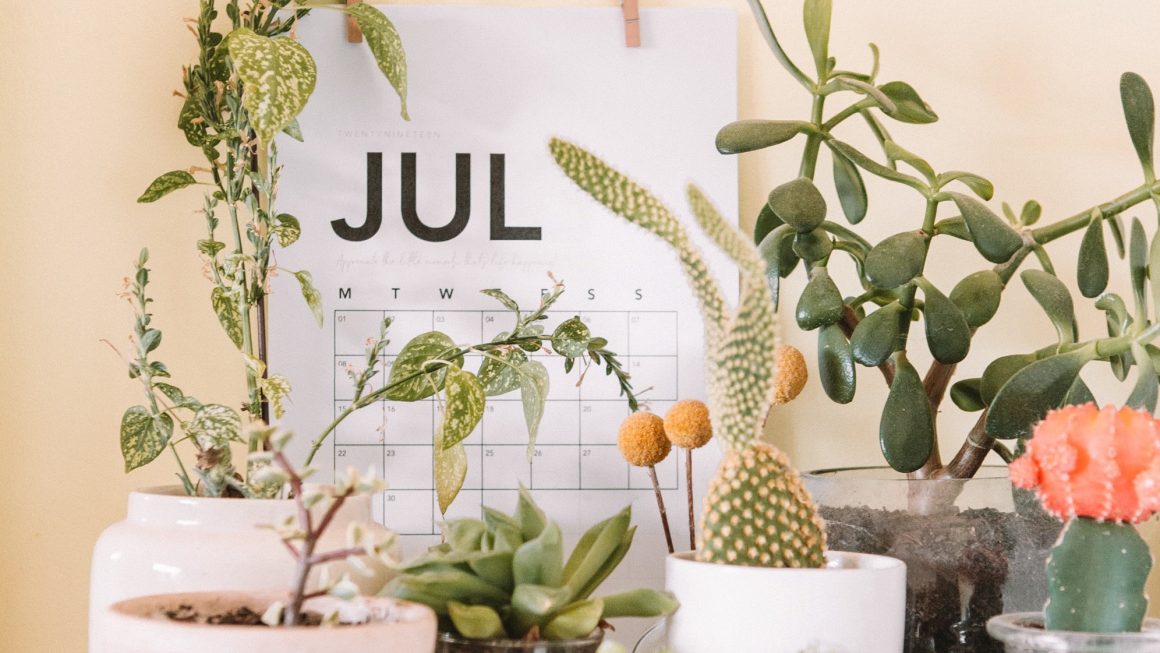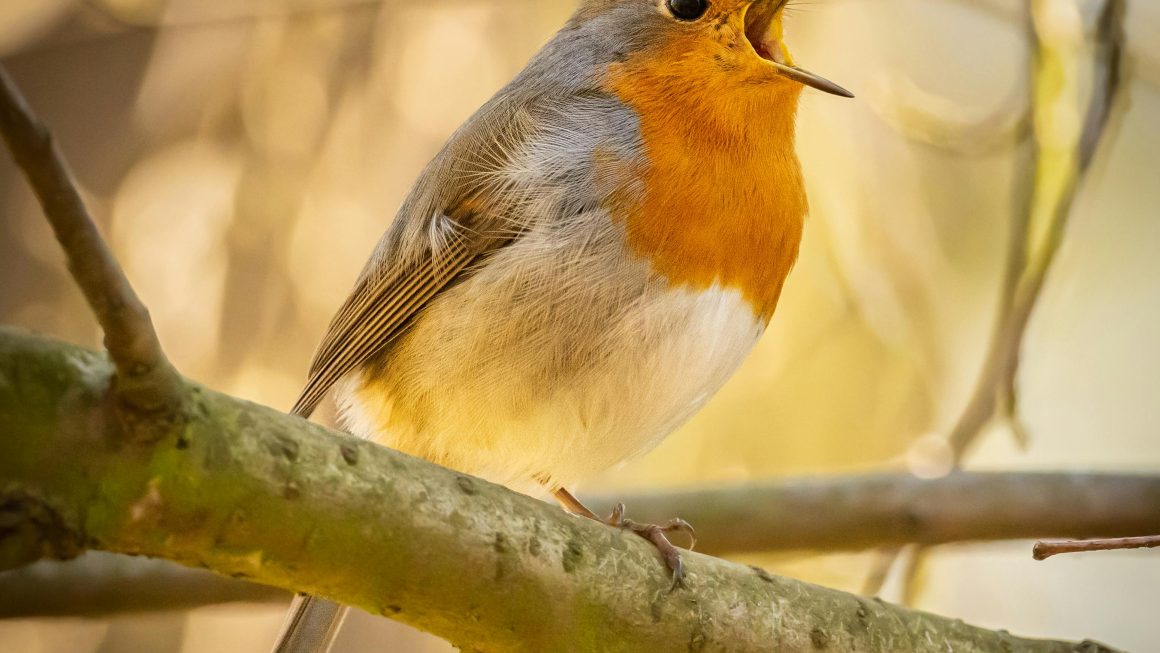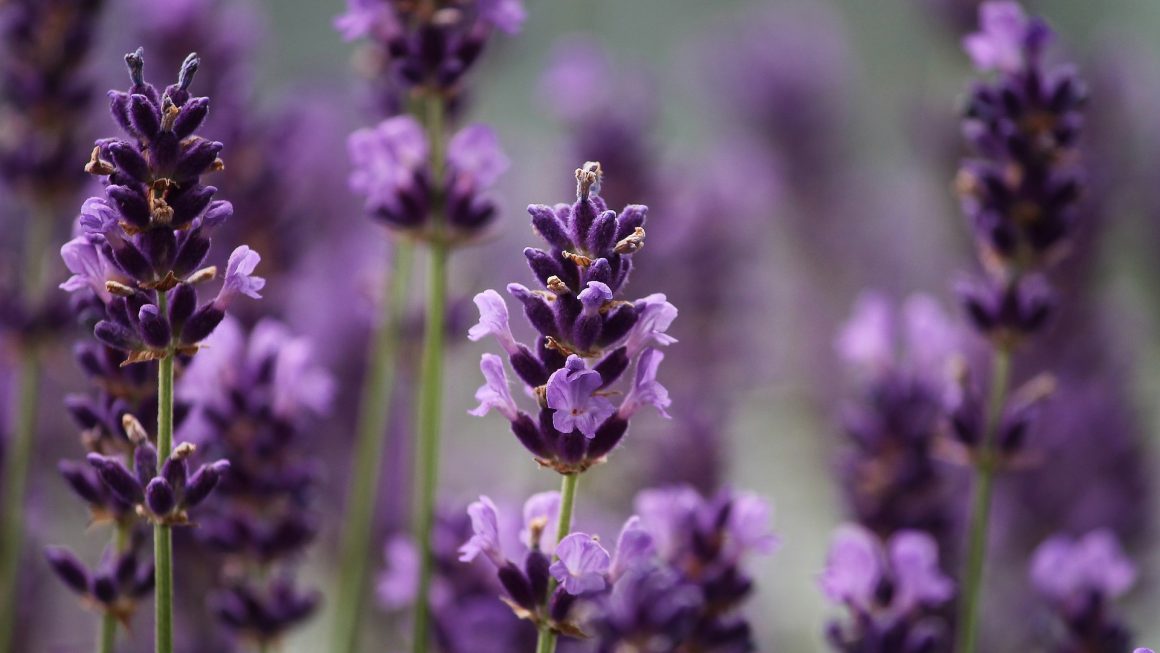This post may contain affiliate links. Please see my disclosure policy to learn more.
Many people don’t think of cardboard as a versatile material, but it has many uses in the garden. Cardboard is biodegradable, natural, and recyclable. As it decomposes, it becomes increasingly enriched in nutrients.
With the recent rise in online shopping, it seems that there is always a constant stream of cardboard coming through your home. So what can you do with all that cardboard? Here are some of the ways you can use cardboard in your garden.
Mulching
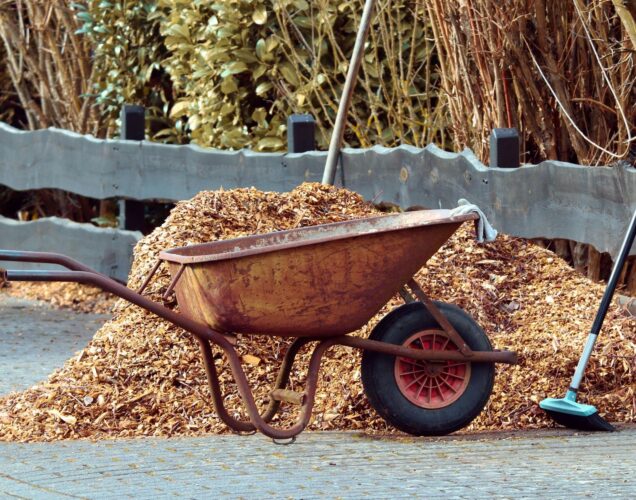
Gardeners have traditionally used mulch to protect plants and improve the appearance of their gardens. Mulch is a layer of material, such as wood chips, leaves, or straw, that is spread over the surface of the soil. It helps to regulate moisture levels, prevent weed growth, and keep the soil from eroding. While there are many different types of mulch available for purchase, one inexpensive and easily accessible option is cardboard.
Cardboard can be used in much the same way as other types of mulch. It helps to control moisture and keep weeds at bay while also protecting the soil from erosion. Furthermore, it breaks down quickly, adding valuable nutrients to the soil. To use cardboard as mulch, wet it down and lay it over the desired area. Be sure to overlap the edges to create a barrier that will hold the mulch in place. Once the cardboard has been in place for a few weeks, it will begin to break down and can be covered with a more traditional type of mulch if desired, such as wood chips or straw.
Cloches
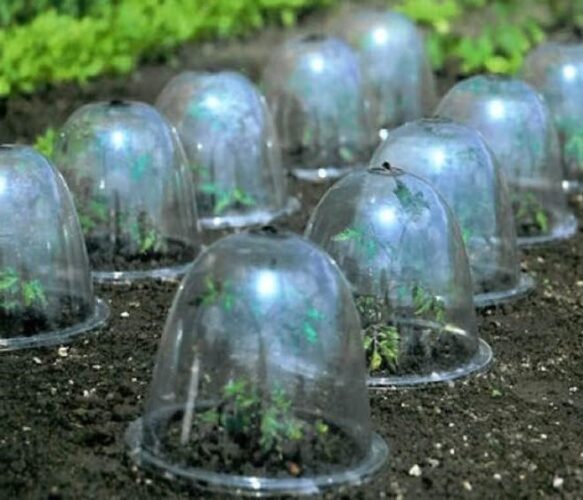
Gardeners have long used cloches to protect their plants from the elements. Also known as bell jars, these glass or plastic covers help to create a miniature greenhouse around a plant, trapping heat and moisture to promote growth. Cloches can be costly, while cardboard boxes are typically free.
If a sudden frost is predicted, simply place cardboard boxes, upside down, over each plant. Use boxes that are a few inches taller and wider than the plant. One box may even be big enough to cover multiple plants at once. Since cardboard is lightweight and could blow away, you may need to put rocks or other heavy items on top of it to hold it down.
Cardboard boxes can deteriorate if they get wet, so be sure to remove them and store them somewhere dry after the danger of frost has passed.
Suppressing Weeds
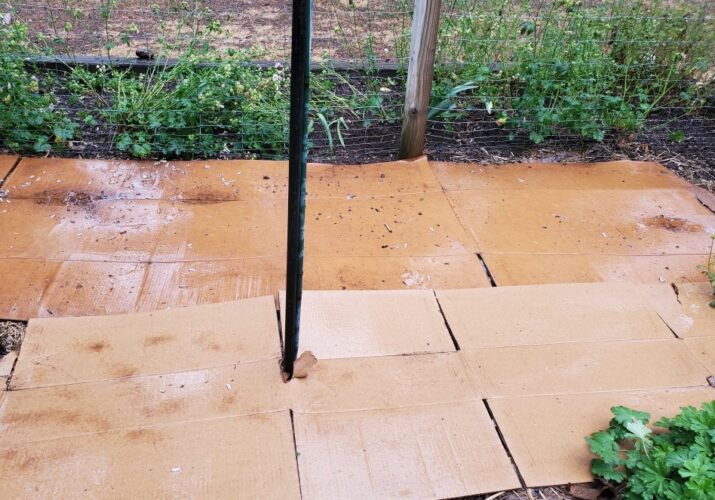
Cardboard is an effective way to suppress weeds in the garden. The cardboard prevents sunlight from reaching the soil, which in turn prevents weed seeds from germinating. Cardboard also smothers existing weeds, causing them to die from lack of sunlight. To use cardboard as a weed suppressant, simply lay it over the area you wish to protect. You can secure the cardboard in place with rocks or landscape staples. Be sure to overlap the edges of the cardboard to create a barrier against weeds. When using cardboard as a weed suppressant, be sure to check underneath it periodically to make sure that no weed seeds have managed to sprout through. With proper care, cardboard can be an effective tool for keeping your garden free of weeds.
Container Gardening
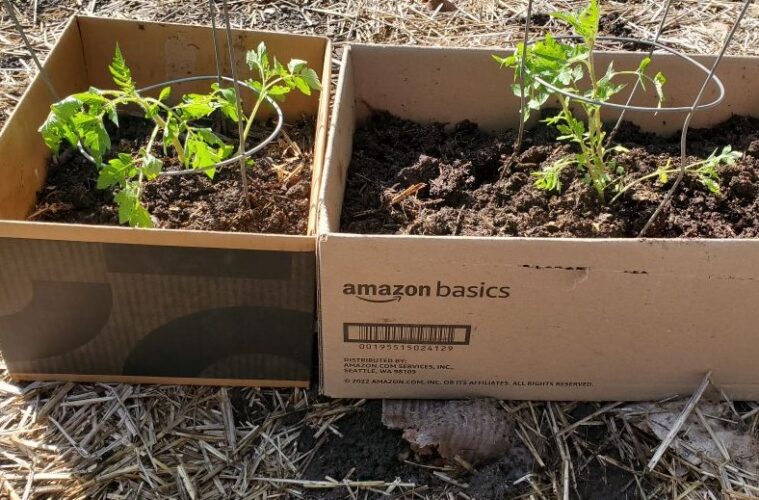
Container gardening is a great way to grow fruits, vegetables, and herbs, even if you don’t have a lot of space. One of the best materials for making DIY containers is cardboard. Cardboard is inexpensive and easy to find, and it can be used to make all sorts of different containers, from small pots to large planters. Plus, cardboard is biodegradable (it takes about 3 months for thick cardboard to break down), so your containers can be composted when you’re finished with them. Using heavy-duty boxes or doubling up on boxes is recommended for container gardening. To make a cardboard container, simply choose the size of the box you desire, make sure it has drainage holes, and fill it with garden soil or potting mix. Then, plant your seeds or seedlings and water them as needed. With a little care, your cardboard container garden will thrive.
Compost
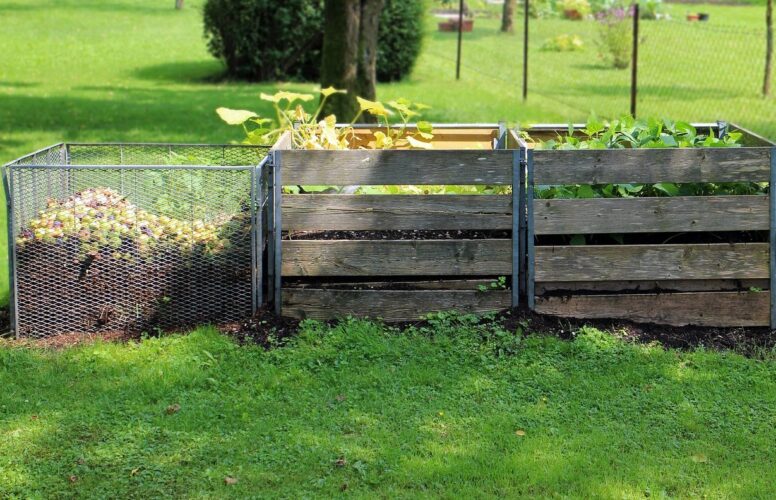
Composting is a great way to reduce waste and give your garden a boost of nutrients at the same time. You can compost all kinds of organic materials, including fruit and vegetable scraps, coffee grounds, and eggshells. And one material that you may not have thought of composting is cardboard.
That’s right – cardboard can be an excellent addition to your compost pile. Cardboard is made from paper, which is an organic material, and it breaks down relatively quickly. Plus, it can help to aerate the compost and keep things moving along. Just make sure to shred the cardboard into small pieces before adding it to the compost bin. Next time you have some cardboard to get rid of, don’t just toss it in the recycling bin. Put it in your compost pile instead – your garden will thank you for it!
There are many ways to use cardboard in the garden. When it comes to gardening, cardboard is versatile, inexpensive, and easy to find. It can be used for everything from weed suppression to container gardening to composting. So the next time you have some cardboard to get rid of, think twice before throwing it away, and put it to use in the garden!
- MADE FROM 65% RECYCLED PLASTIC - Reusable so you can reduce waste; supports the move toward a sustainable future whether using as indoor plant support, or replacing garden wire in the yard
- SECURE AND DURABLE - Strong VELCRO Brand ONE-WRAP Garden Ties with non-slip grip keeps flowers and plants staked, supported, and securely bundled together; suitable for vining plant support on a plant trellis
- GENTLE ON PLANTS - Soft side won’t scratch or damage plants; wraps onto itself for a secure hold; plant supports are easy to reposition for growing blooms
- CUT TO LENGTH - Use only the desired amount; adjustable and reusable for a low waste lifestyle; ideal for year after year use for tomato cages and supports
- PERFECT FOR HOUSE PLANT SUPPORT - Use ONE-WRAP Garden Ties to stake top heavy house plants and natural climbers for quick growth
- IDEAL GARDEN BASKET: Basket made of durable, plastic with multi-functional features to simplify collecting, transporting, and cleaning harvested produce or tools; Designed with two sets of handles for each user's preferred carry
- INNOVATIVE DESIGN: Colander side has drain holes for washing harvested produce; Enclosed side can be used for soaking or carrying clean produce or tools; Ergonomic side handles ideal for two-handed carrying; Folding handles interlock for comfortable, one-handed use
- LONG-LASTING AND RELIABLE: Crafted with a durable, plastic construction to make cleaning easy and provide excellent durability for lasting value; Fiskars lawn and garden tools are built to last
- QUALITY GARDEN TOOLS: Designed to help you cultivate a better garden, Fiskars garden and yard tools are equipped with smart technologies and award-winning, ergonomic features that make it easier and more enjoyable to transform your outdoor space
- INCLUDES: 1 Fiskars Garden Harvest Basket; Backed by Lifetime Warranty
- GARDENING ESSENTIAL: Steel blade plant shears ideal for a variety of pruning tasks like cutting flower stems; gardening shears with bypass action are Ideal for cutting delicate stems as the bypass action is less likely to cause damage to the stems
- MAXIMUM POWER AND PRECISION: Fiskars pruning shears with low-friction blade coating makes smooth cuts, reduces gumming, and enhances rust resistance; the hand pruners with steel blades stay sharp through heavy use and provide excellent durability
- SMART FEATURES: Garden Scissors- Heavy Duty, with self-cleaning sap groove keeps blades from sticking and non-slip grip handle and easy-open lock allows for more control of garden clippers (handheld); fits well in most pruner holsters
- QUALITY GARDEN TOOLS: Designed to help you cultivate a better garden, Fiskars pruning shears are equipped with smart technologies and award-winning, ergonomic features that make it easier and more enjoyable to transform your outdoor space
- INCLUDES: Fiskars Bypass Pruning Shears that make great clippers for gardening; Lifetime Warranty
- Sturdy and Stainless Steel Garden Set: Made of Stainless Steel, this stainless steel gardening tools is durable and rust-proof. Moreover, with stable material like this, these gardening tools are hardly deformed
- One for All Package: Grenebo garden tools set includes a total of 8 tools and 1 storage bag. Pruning Shears, Weedier, Transplanter, Cultivator, etc., nearly everything you need in daily garden maintenance
- Ergonomic Handle Design: In order to realize a more comfortable and effortless user experience, the gardening tools were non-slipped wooden handles, well-designed and suitable for different hand sizes. No matter kids or seniors, these gardening tools made things easy during digging, carrying, weeding, planting, and pruning
- Garden Tote Bag: The biggest concern of buying a big gardening tool set is storage, but for this consideration, Grenebo gardening tools for gardening come with a heavy-duty storage bag, is floral design with a vintage style, adds additional beauty to your garden. Moreover, there is a specialized hole on each tool handle for hanging them up in the off-season or after use
- Show your love with a premium Garden Tools Set: The tote bag durable and easy to carry, which is the choice for women, neighbors, and all enthusiastic gardening lovers
- [High Quality] - The Bamboo stakes are made of high quality natural bamboo.It’s very strong and durable,great for plant support!Each stakes is inspected manually to ensure quality.
- [Multipurpose Use] - Perfect for indoor and outdoor plants.It's great for supporting tomatoes, beans, potted plants and vegetables etc.
- [Natural] - Natural and eco-friendly bamboo is very helpful to plants,which can be reusable.
- [Train Plants To Grow Upwards] - It’s help plants grow vertically upwards and support.Allow potted or climbing plants to grow vertically toward the light,mimicking their growing environment.
- [Package Included] - 20Pcs 18 inches natural bamboo sticks with green ties.If you have any questions,please feel free to contact us,our after-sales department will definitely provide you with the best solution!

